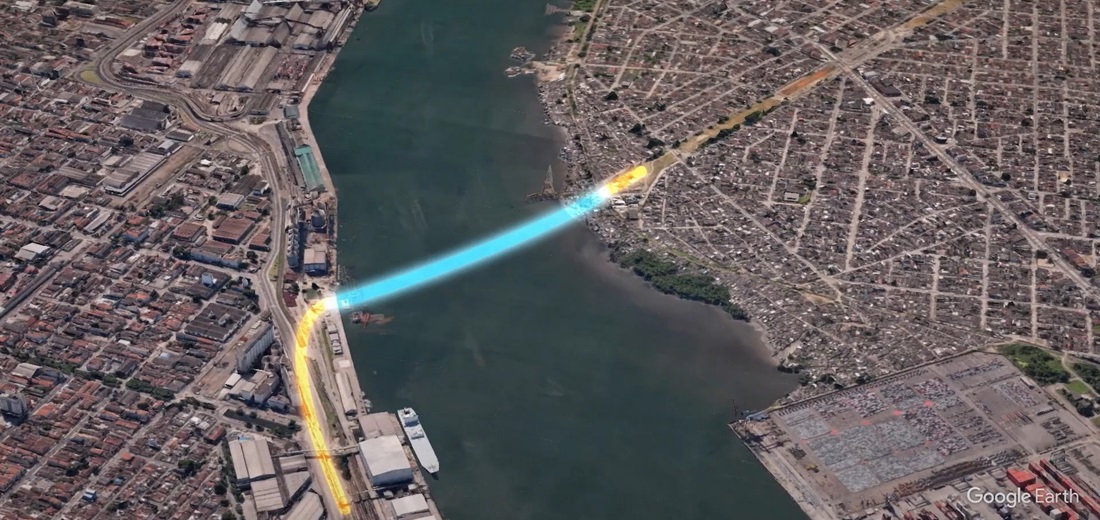
State Legislature gives the green light to Santos-Guarujá Tunnel
Oct, 09, 2024 Posted by Gabriel MalheirosWeek
The Legislative Assembly of São Paulo (Alesp) approved a bill on Tuesday (8) authorizing the São Paulo state government to establish a public-private partnership (PPP) for the construction of the Santos-Guarujá submerged tunnel. The project, estimated to cost R$ 6 billion, will be jointly funded by the state and federal governments, with additional private investment. The bid is expected to be launched in March 2025, with the tender process set for July of the same year.
The PPP approval had been under review by state deputies for a month. The dry connection between Santos and Guarujá is part of São Paulo’s Investment Partnerships Program (PPI-SP) and is included in the federal Growth Acceleration Program (PAC). Of the R$ 6 billion projected for the tunnel, 86% will come from public funds shared equally between the state and federal governments. The project is expected to create around 9,000 direct and indirect jobs.
“Once implemented, the tunnel will allow the crossing between Santos and Guarujá to be completed in under five minutes without being affected by fog, storms, or disruptions from ships docking at the Port of Santos. This will ensure smooth transportation and user safety,” said Rafael Benini, São Paulo’s Secretary for Investment Partnerships, in a statement.
Licensing
At the same time, the state government submitted the Environmental Impact Report (EIA-Rima) to São Paulo’s Environmental Agency (Cetesb) in early July, though no decision has been made yet. If the project is deemed environmentally viable, Cetesb will issue the preliminary license.
On August 24, the 45-day deadline for public comments on the environmental licensing process ended. Cetesb stated that public feedback and contributions from relevant authorities will be considered in its ongoing review, along with input gathered during upcoming public hearings.
“Generally, the preliminary license confirms the project’s environmental viability and sets the requirements the developer must meet to obtain the installation license,” Cetesb explained.
Next Steps
To obtain the required license, the responsible company must submit the final project plan and detail the measures to mitigate and control environmental impacts during construction.
At this stage, the relevant authorities must also provide information on expropriation and resettlement plans and the corresponding mitigation measures, as noted by Cetesb.
Once all conditions are met, the license will be issued with specific terms for commencing construction. After completion, the developer must apply for an operating permit, allowing operations to begin, provided Cetesb confirms compliance with the earlier licensing phases.
Project
The new project under review is based on the original proposal by the now-defunct state-owned company Dersa and includes constructing a dual road system in the Macuco district of Santos.
Public Hearings
The State Environmental Council (Consema) held the first public hearing on the Environmental Impact Study and Report (EIA-Rima) for the tunnel on Wednesday (9) at 5 p.m. at Guarany Theater in Santos (Praça dos Andradas, 100, Centro). The second hearing is scheduled for Thursday (10) at 5 p.m. at Procópio Ferreira Theater in Guarujá.
-
Ports and Terminals
Jun, 10, 2022
0
Port throughput reaches 375.7 million tonnes in Brazil
-
Meat
Feb, 28, 2024
0
Singapore Opens Market to Brazilian Beef Extract
-
Other Cargo
Mar, 20, 2024
0
Exports pick up pace for Brazilian cotton market
-
Ports and Terminals
Sep, 03, 2020
0
Expansion of Maranhão grain terminal increases capacity at Itaqui Port



